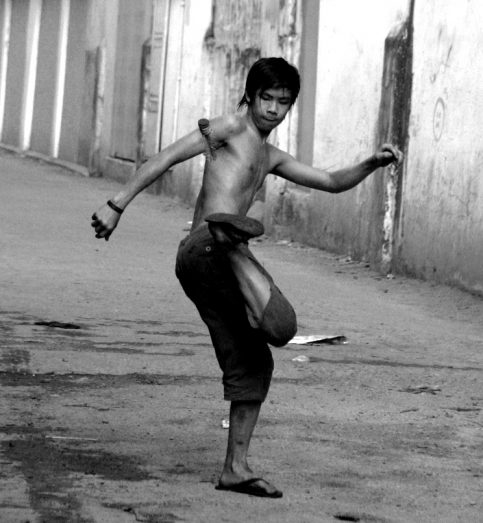Aside from China, Cambodia is the other adjacent neighbor whose history is intricately linked to Vietnam. (Having gained independence from China after 1000+ years, Vietnamese headed south into former Cambodian/Champa territory, which now makes up most of Vietnam.) Vietnamese have assimilated Cambodians who lived in what is now Central/South Vietnam, and in the mid-80s, the recently victorious Communist government have driven out dictator Pol Pot from Vietnam’s southern border. Despite a long history of conflicts there are approximately 1 million Vietnamese residing in Cambodia, mostly along the neglected riverside or on a remote lake near nowhere land.
Earlier in the year I bumped into some college friends in Vietnam who have been working with Vietnamese children in Pnom Penh for the last 5 years. Their education work with this disadvantaged population interested me a great deal, so I asked to photograph their schools in Pnom Penh and Siem Reap. This ad hoc trip added a missing part of Vietnamese history into my mental image library. Before connecting with them I never realized that there were over 1 million Vietnamese residing in Cambodia, a country whose total population is barely 12 million after Pol Pot’s massacre, and who, unlike other Vietnamese overseas immigrants, didn’t make close to $80K/year, or had enough resources to open a nail shop. Many Vietnamese in Cambodia live in slums or along/on the river where the surrounding streets are lined with trash.
While photographing Cambodia and the faces of Vietnamese children I was able to link part of Vietnam’s history, and the 30 years of development that I missed while building my life in the U.S. Basically, Cambodia looks like Vietnam 25 years ago, according to my friends. (Many of the cuisines I saw in Cambodia I thought was Vietnamese food, although they tasted very different. Below are images taken of Vietnamese school age children in Pnom Penh, Siem Reap, and other Pnom Penh suburbs and nearby villages.
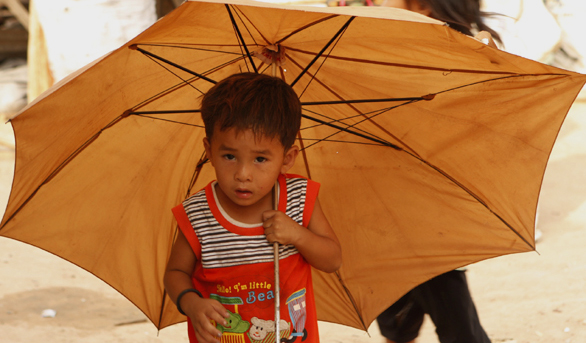
Little boy under big umbrella
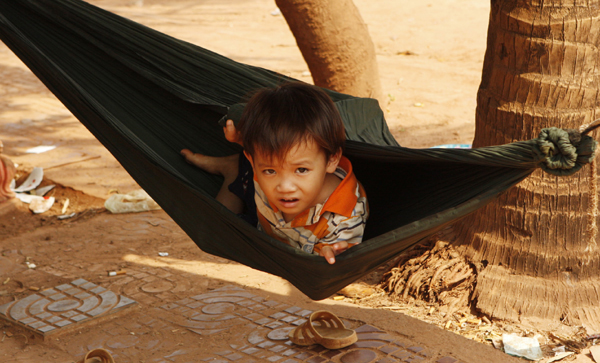
Boy in hammock
Life on Water
Geographic areas that draw Vietnamese are those with abundance of rice and water. Historically and now that is how it’s always been. In the U.S., California, Florida, and Texas are the three states that boast the largest VNese population. These also have the longest coastlines (besides Hawaii). Likewise in Cambodia, Vietnamese mostly dwell along the riverside or literally on the river/lake. During my visit I got the chance to travel to these water areas and capture this unique way of life. Those who live on the lake can be as far from land as 2 hours by speedboat, and thus, access to provisions other than seafood is scarce and difficult. Education for youth needs to be brought on location since rowing students to school 30 km daily is unfeasible.
My visit to the VNese communities on and along the water impressed upon me the severe shortage of basic provisions that one takes for granted. Yet I documented with my camera joy and exhiliration on the faces of children despite the lack of material wealth and comfort. To me these images bring us back to what is important, especially during the current depressed economy.
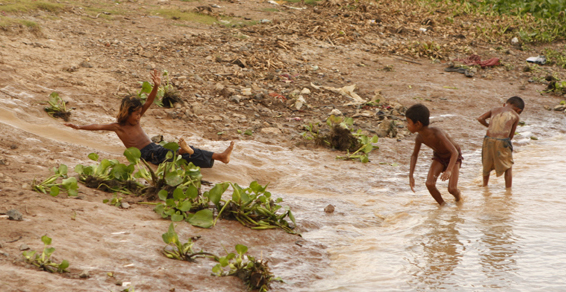
Mudsliding
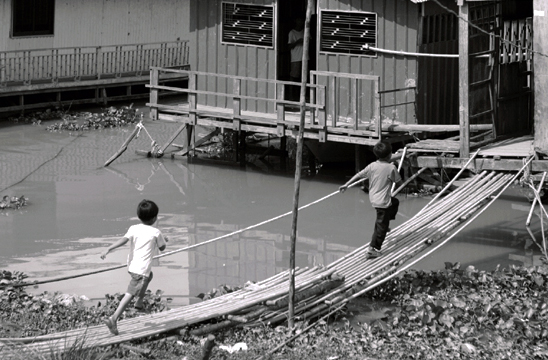
Dashing to class
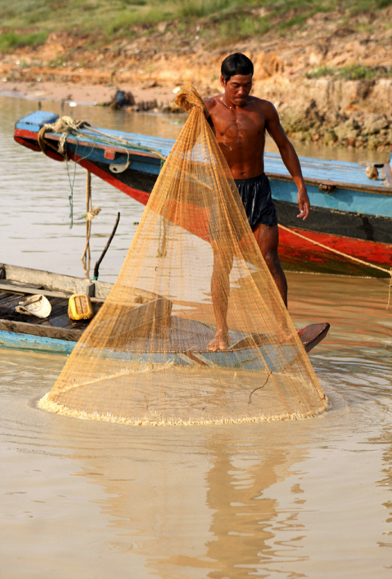
Fisherman
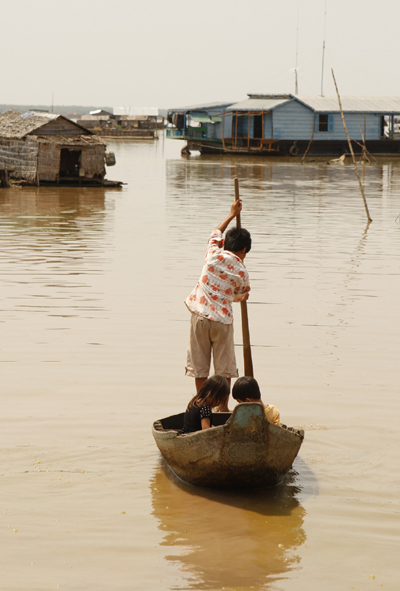
Rowing home
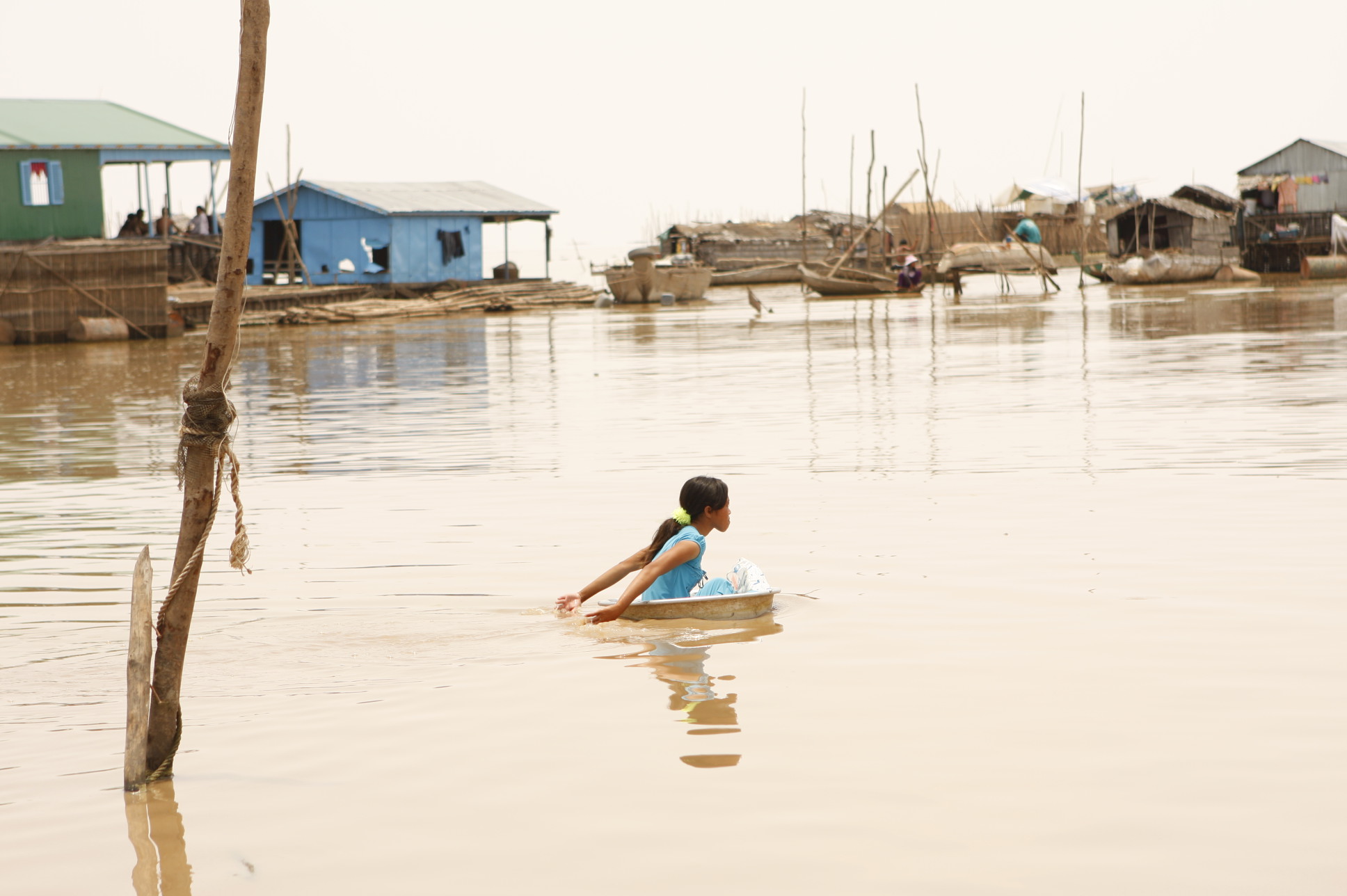
Rowing with hands
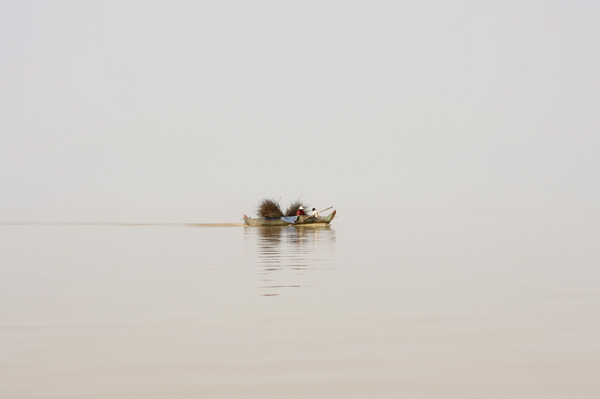
Life on water
Schooling
Vietnamese children are often not in school due to economic reasons and other obstacles, such as language and discrimination. Education need is mostly overlooked because Vietnamese in Cambodia do not have a strong voice, as most live in the outskirt of town, by the river, or on the lake, where concerns are generally for daily provisions and other basic necessities. And, because of the rift between the two countries over centuries, Vietnamese in Cambodia are greatly discriminated against, and consequently have little access to resources that are available to the population at large. Additionally, education in Cambodia isn’t as enforced in the home as in Vietnam, and this translates to Vietnamese living here, creating another layer of challenge for children to rise out of poverty in the long-run.
Those in the adjacent homeland who are aware of this situation have organized volunteer educators to across the border to help schools that service Vietnamese students. My friends work with NGO/church workers to establish education centers for them where many pre-teens are only in first or second grade level, and classes are sometimes taught by instructors with only a 7th grade education. But the needs are so great that western standards for teachers are put aside to accommodate children living in a society where they are practically ghosts on the road to nowhere.
Having recuperated from most of my illness during this crucial point of the trip, I was able to photograph the schools and the slums along the river in the last few days, including a school in the middle of a lake.
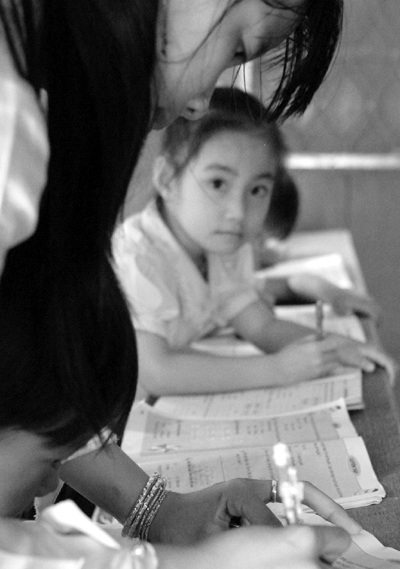
Teacher helps student with class assignment

Boy doing school work in class.
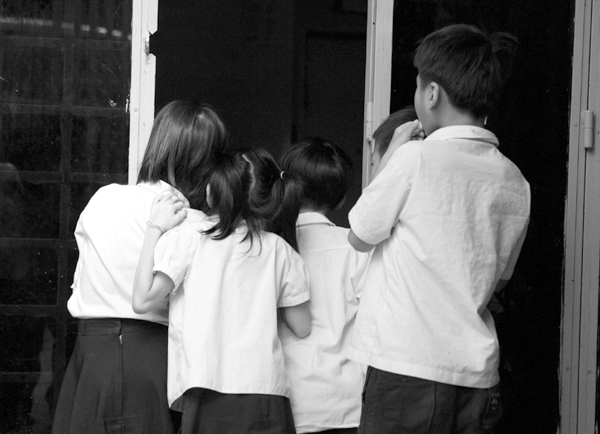
Peeking into classroom

Somersault during recess.
